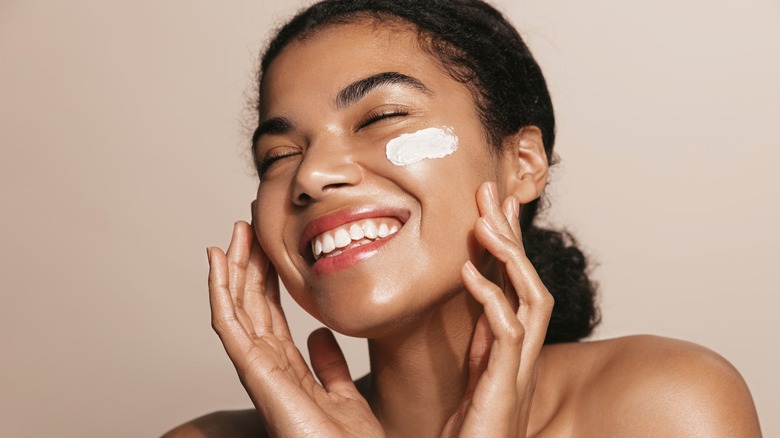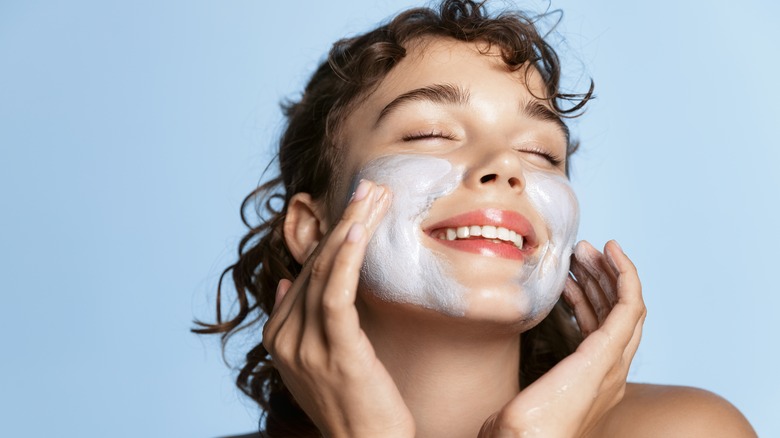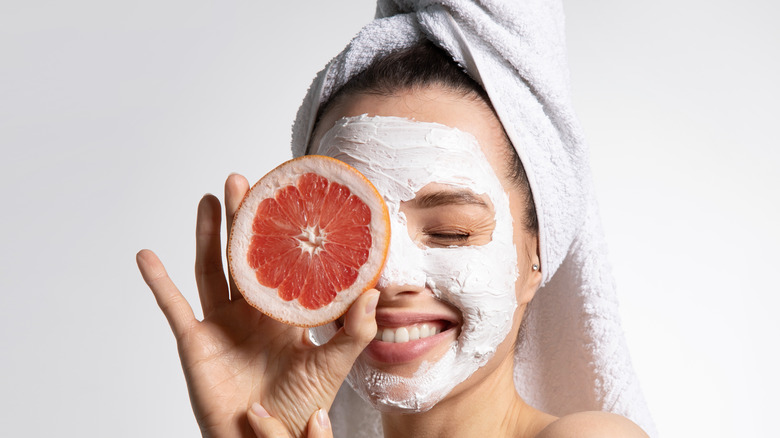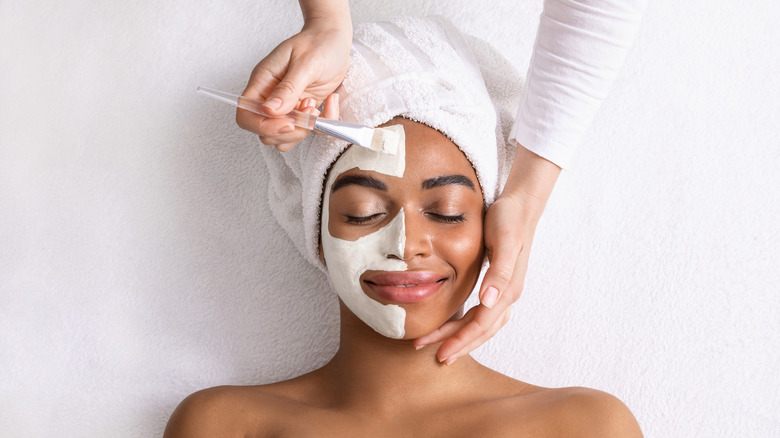What's The Big Difference Between AHAs, BHA, And PHAs In Skincare?
Before creating a skincare routine, you should set some skincare goals. With your goals in mind, you can choose the right skincare products and ingredients that ensure you'll have the brighter, smoother, or more even skin you're looking for. No matter the skincare routine, exfoliation is an important step. Exfoliation removes dead skin cells from the surface and deep within the skin. This process helps to prevent breakouts and improve skin texture.
You can exfoliate your skin both manually and chemically. Chemical exfoliants work by breaking down the bonds between skin cells, according to West Lake Dermatology. Dead skin cells and debris are then able to be rinsed away. Manual exfoliation uses scrubs, sponges, or brushes to remove skin cells or debris. However, this can sometimes be too rough, creating micro tears that can age the skin or increase oil production.
For that reason, chemical exfoliation is more often recommended. But with a few different types of chemical exfoliants, it can be overwhelming to know which is right for you. The most common are AHAs and BHAs, but PHAs are also gaining popularity. So what's the difference between them, and what can they do for your skin?
Alpha Hydroxy Acids
Alpha hydroxy acids, commonly referred to as AHAs, are popular in skincare. This chemical exfoliant dissolves the corneodesmosomes, or protein fibers, that act as glue between dead skin cells on the skin's surface, according to Dr. Dennis Gross. Removing these dead cells on the surface reveals healthier cells underneath. These new cells make your skin look younger, plumper, and smoother.
AHAs can also be used to boost collagen production, which can improve the appearance of fine lines and wrinkles as well as help firm the skin. Through exfoliating the skin, AHAs can also reduce hyperpigmentation and dark spots, evening out your skin tone. With regular use, you can often see results in three weeks. But it's essential to use SPF sunscreen as AHAs can make your skin sensitive to sunlight.
In skincare products, you can find AHAs in the form of masks, serums, toners, peels, cleansers, and moisturizers for your face, body, and scalp. According to Medical News Today, lactic acid, glycolic acid, malic acid, citric acid, and tartaric acid are common forms of alpha hydroxy acids.
Beta Hydroxy Acids
Along with AHAs, BHAs are common ingredients in a skincare routine. Beta hydroxy acids are often used to fight against acne breakouts and blocked pores. BHAs work deep within the skin's layers to dissolve any build-up of skin cells, oils, or sebum. This type of exfoliant is gentler than AHAs, according to Glow Day, which can be ideal for anyone with sensitive skin. BHAs are also oil-soluble, which means it dissolves in oil. This makes it an excellent option for those with oily, acne-prone, or combination skin.
Use BHAs to help control your skin's oil production and regulate sebum, which will help control your acne and breakouts. Use BHAs to treat blackheads, whiteheads, and inflamed breakouts. And if you have active acne, it can help reduce inflammation and soothe any current redness or swelling. BHAs can be found in masks, serums, cleansers, and toners to add to your skincare routine.
Salicylic acid is the most common type of BHAs. This acid is often used for acne treatment and prevention. It may also be listed in product ingredients as related substances like salicylate, sodium salicylate, and willow extract, according to the Food and Drug Administration. Tropic acid and trethocanic acid are also two types of BHAs that may be listed in product ingredients.
Polyhydroxy Acids
Polyhydroxy acids, shortened to PHAs, are rising in popularity in the skincare world. These ingredients are meant to have similar peeling properties but are less irritating than their exfoliating predecessors, according to The Klog. PHAs provide a mild peeling on the top surface of the skin, revealing a smoother skin tone. And what sets it apart from other chemical exfoliants is that it attracts moisture and prevents substantial moisture loss during the exfoliating process.
PHAs aren't as irritating as other chemical exfoliants, making them an ideal ingredient for those with sensitive skin or who experience irritation like redness or flaking. This is because PHA molecules are larger, so they don't penetrate too deeply into the skin. Anti-inflammatory and antioxidant properties are also a benefit of these ingredients.
Like the other chemical exfoliants, PHAs can be found in various products such as masks, toners, cleansers, and moisturizers. Dermatologist Dr. Peterson Pierre tells Healthline that gluconolactone, lactobionic acid, and galactose are common forms of PHAs. Because PHAs are gentler than other chemical exfoliants, it works well with other skincare ingredients, including AHAs and BHAs.



